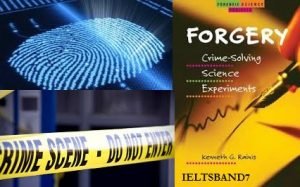| WORD |
MEANING |
SYNONYM |
| 1. Showpiece |
Something that is displayed or exhibited |
Display, masterpiece, model, work of art |
| 2. Turf |
A layer of matted Earth formed by grass and plant roots |
Grass, lawn, sod, soil, peat, sward |
| 3. Avenge |
To take vengeance or exact satisfaction for. |
Vindicate, chasten, chastise, punish, redress, repay, requite, revenge |
| 4. Replicating |
Folded, bent back on itself |
Clone, depict, duplicate, imitate, mirror, reflect, repeat, reproduce, simulate |
| 5. underdog |
A person who is expected to lose in a contest or conflict |
Dark horse, longshot, bottom dog, out-of-towner |
| 6. Thrilled |
To affect with a sudden wave of keen emotion or excitement, as to produce a tremor or tingling sensation through the body |
Elated, atingle |
| 7. En route |
On the way |
Advancing, along the way, bound, driving, en voyage, entrained, flying, heading toward, in passage, in transit, making headway |
| 8. resolute |
Firmly resolved or determined; set in purpose or opinion |
Adamant, bold, courageous, obstinate, persistent, relentless, serious, staunch, steadfast, strong, stubborn, tenacious, uncompromising, unflinching, unshakable, unwavering, unyielding |
| 9. stride |
To walk with long steps, as with vigor, haste, impatience or arrogance |
Stalk, stomp, traipse, tramp, clump, drill, march, pace, parade, pound, stamp, stump |
| 10. decisive |
Having the power or quality of deciding |
Conclusive, critical, crucial, definitive, determined, fateful, forceful, influential, momentous, positive, resolute, significant |
| 11. commitment |
The act of committing |
Engagement, guaranteed, need, pledge, promise, responsibility, charge, committal, devoir, duty, liability, must, undertaking, vow, word |
| 12. exceptionally |
Forming an exception or rare instance; unusual; extraordinary |
Abnormally, especially, particularly |
| 13. interceptions |
To take possession of (a ball or puck) during an attempted pass by an opponent team |
Interference, stopping, interfering with, interposing |
| 14. pivotal |
A vital or critical importance |
Central, climatic, critical, crucial, decisive, essential, momentous, vital |
| 15. aerial |
Reaching far into the air; high; lofty |
Flying, aeriform, aeronautical, airy, atmospheric, birdlike, ethereal, lofty, pneumatic, up above vapours |
| 16. of the moment |
Of importance at this time |
|
| 17. trailed |
To tread down or make a path through |
Chase, fall behind, falter, lag, pull, dally, dangle, dawdle, delay, dog, drag, draggle, draw, droop, extend, flag, halt, hang, haul, hunt, linger, loiter, plod, poke, procrastinate, pursue, shadow, shag, spook, spoor, stalk, straggle, stream, tail, tarry, tow, trace, track, traipse, trudge |
| 18. dribbled |
To move (the ball or puck) along by rapid succession of short kicks or pushes |
Drizzle, ooze, squirt, distill, drip, drivel, drool, drop, leak, run, salivate, seep, slaver, slobber, spout, trill, weep, fall in drops |
| 19. tallies |
An account or reckoning; a record or debit and credit, of the score of a game, or the like |
Poll, total, account, mark, reckoning, score, summation, tab, running total |
| 20. suspension |
Something on or by which something else is suspended or hung |
Break, freeze, halt, interruption, layoff, moratorium, period, postponement, stoppage, termination, abeyance, adjournment, breather, cessation, conclusion, cutoff, deferment, disbarment, discontinuation, doldrums, dormancy, downtime, end, ending, finish, five, intermission, latency, letup, pause, quiescence, remission, respite, stay, suspense, ten, time-out |
| 21. unfazed |
Not dismayed or disconcerted; undaunted |
Undaunted, unperturbed, calm, collected, composed, cool, nonchalant, casual, detached, placid, serene, tranquil, unvexed, unworried |
| 22. emulate |
To try to equal or excel; imitate with effort to equal or surpass |
Follow suit, imitate, mimic, mirror, challenge, compete, contend, ditto, do, follow, outvie, rival, do like, follow in footsteps, follow the example of, rivalize |
| 23. dispossess |
To put( a person) out of possession, especially of real property |
Evict, appropriate, eject, expel, expropriate, ousts, put of, throw into the street |
| 24. marginally |
At the outer or lower limits; minimal requirements; almost insufficient |
Kind of, lightly, somewhat, hardly, insignificantly, more or less, on a small scale, to some extent, scarcely any |
| 25. impending |
About to happen; imminent |
Approaching, brewing, imminent, looming, coming, gathering, hovering, menacing, near, nearing, overhanging, portending, threatening |
| 26. complemented |
Something that completes or make perfect |
Accompaniment, addition, aggregate, augmentation, balance, capacity, completion, consummation, correlate, correlative, counterpart, enhancement, enrichment, entirety, filler, makeweight, pendant, quota, remainder, rest, supplement, total, totality |
| 27. crucial |
Involving an extremely important decision or result; decisive; critical |
Central, compelling, deciding, decisive, essential, imperative, momentous, necessary, pivotal, pressing, touchy, urgent, vital, acute, clamorous, climacteric, desperate, dire, hanging by thread, high-priority, insistent, on thin ice, searching, showdown touch and go |
| 28. interventions |
Interposition or interference of one state in the affairs of other |
Interference, meditation, arbitration, intercession, interposition, interruption |
| 29. misplaced |
To put it in a wrong place |
Gone, lost, mislaid |
| 30. materialized |
To come into perceptible existence; appear; become actual or real; be realized or carried out |
Appear, emerge, happen, occur, realize, take place, turn up, unfold, actualize, coalesce, develop, embody, evolve, exteriorize, externalize, hypostatize, manifest, metamorphose, objectify, personalize, personify, reify, substantiate, symbolize, typify, visualize |
| 31. exploiting |
To utilize, especially for profit; turn to a practical account |
Abuse, apply, capitalize on, employ, handle, manipulate, mine, profit from, use, utilize, bleed, exercise, finesse, fleece, jockey, maneuver, milk, play, skin, soak, stick, work, avail oneself of, cash in on, get mileage out of |
| 32. anxiety |
Distress or uneasiness of mind caused by fear of danger or misfortune |
Angst, apprehension, concern, disquiet, doubt, dread, jitters, misery, misgiving, mistrust, nervousness, panic, restlessness, suffering, suspense, trouble, uncertainty, unease, botheration, butterflies, care, creeps, disquietude, distress, downer, drag, fidgets, flap, foreboding, fretfulness, fuss, heebie-jeebies, jumps, needles, shakes, shivers, solicitude, watchfulness, willies, worriment |
| 33. flattering |
To try to please by complimentary remarks or attention |
Complimentary, favorable |
| 34. deceive |
To mislead by false appearance or statement |
Betray, cheat, circumvent, defraud, delude, disappoint, dupe, entrap, falsify, fool, hoodwink, swindle, trick, victimize, bamboozle, beat, beguile, bilk, buffalo, burn, clip, con, cozen, ensnare, fake, fleece, gouge, gull, hoax, humbug, outwit, rob, scam, screw, sell, skin |
| 35. achievement |
Something accomplished, especially by superior ability, special effort or great courage |
Accomplishment, attainment, creation, deed, effort, feat, performance, realization, success, triumph, victory, acquirement, acquisition, act, actualization, completion, conquest, consummation, contrivance, effectuation, enactment, encompassment, execution, exploit, fulfillment, hit, masterpiece, production, stroke, tour de force |
| 36. incentive |
Something that incites or tends to incite to action or greater effort as a reward offered for increased productivity |
Encouragement, enticement, impetus, motivation, reason, stimulus, allurement, bait, carrot, catalyst, come-on, consideration, determinant, drive, excuse, exhortation, goad, ground, impulse, incitement, influence, insistence, inspiration, instigation, motive, persuasion, provocation, purpose, rationale, spring, spur, stimulant, stimulation, temptation, urge, whip, reason why |



